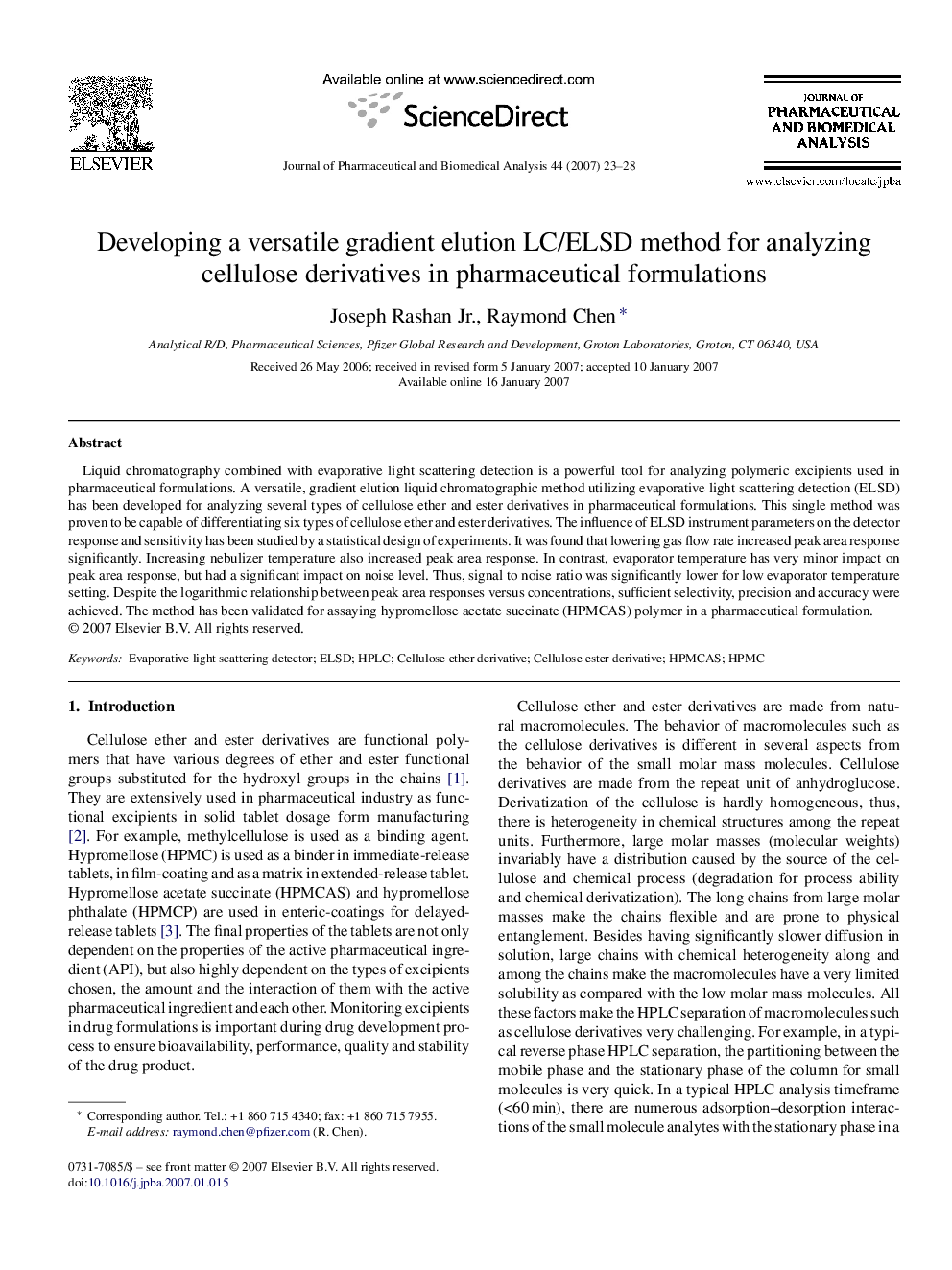| Article ID | Journal | Published Year | Pages | File Type |
|---|---|---|---|---|
| 1224287 | Journal of Pharmaceutical and Biomedical Analysis | 2007 | 6 Pages |
Liquid chromatography combined with evaporative light scattering detection is a powerful tool for analyzing polymeric excipients used in pharmaceutical formulations. A versatile, gradient elution liquid chromatographic method utilizing evaporative light scattering detection (ELSD) has been developed for analyzing several types of cellulose ether and ester derivatives in pharmaceutical formulations. This single method was proven to be capable of differentiating six types of cellulose ether and ester derivatives. The influence of ELSD instrument parameters on the detector response and sensitivity has been studied by a statistical design of experiments. It was found that lowering gas flow rate increased peak area response significantly. Increasing nebulizer temperature also increased peak area response. In contrast, evaporator temperature has very minor impact on peak area response, but had a significant impact on noise level. Thus, signal to noise ratio was significantly lower for low evaporator temperature setting. Despite the logarithmic relationship between peak area responses versus concentrations, sufficient selectivity, precision and accuracy were achieved. The method has been validated for assaying hypromellose acetate succinate (HPMCAS) polymer in a pharmaceutical formulation.
